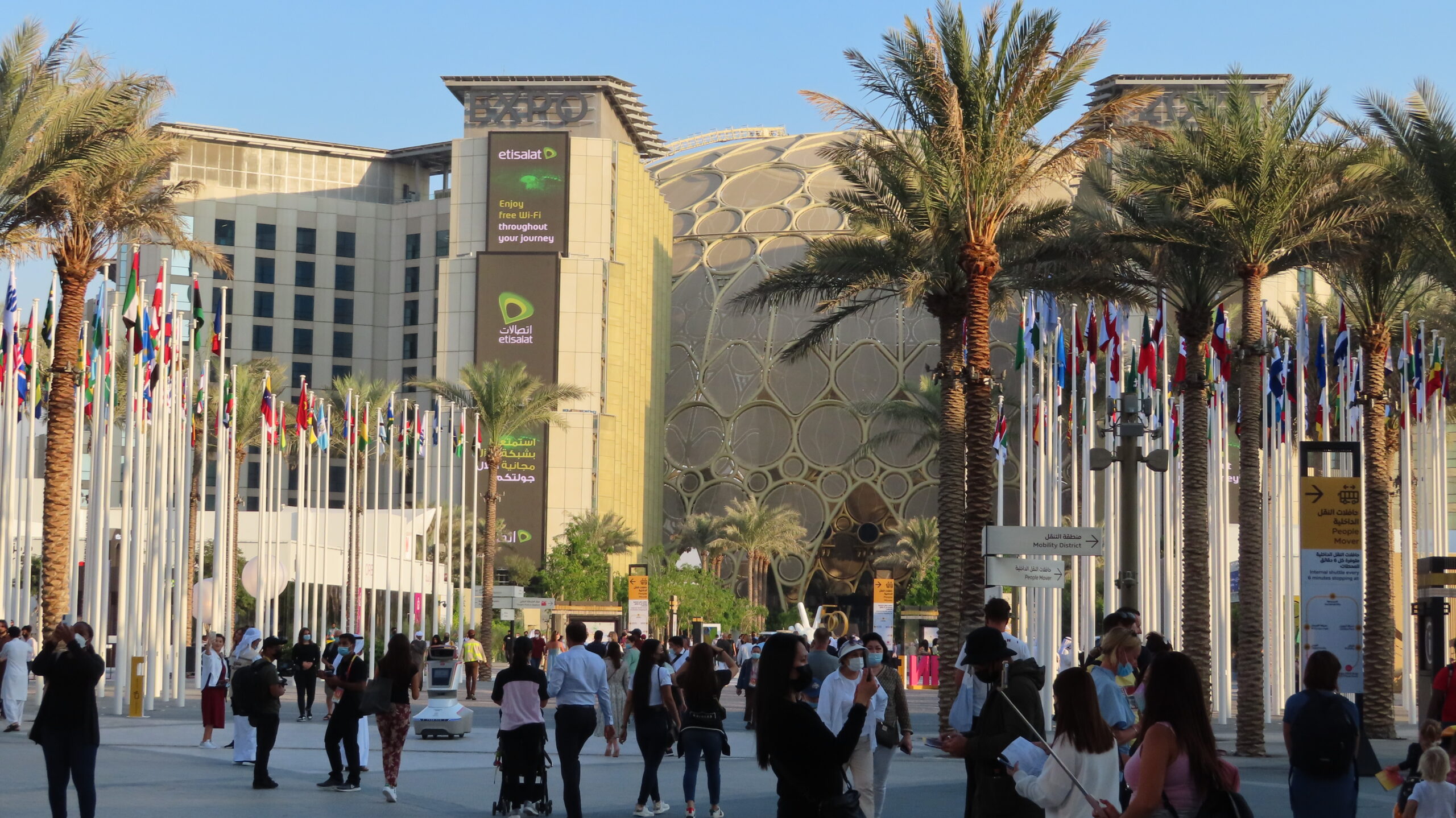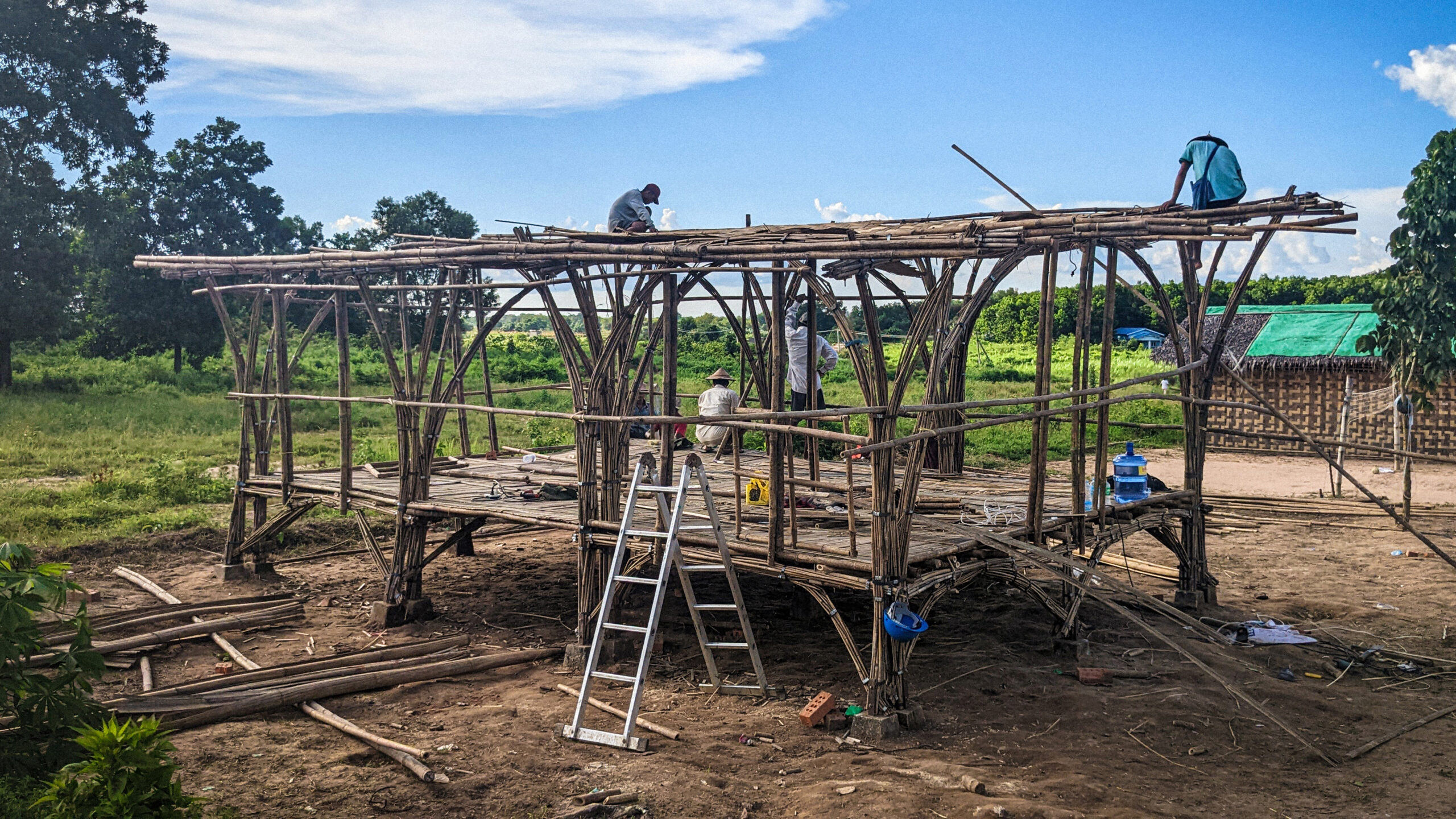The latest edition of “Architizer: The World’s Best Architecture” — a stunning, hardbound book celebrating the most inspiring contemporary architecture from around the globe — is now available. Order your copy today.
The “À table” 2023 Serpentine Pavilion, designed by Paris-based architect Lina Ghotmeh, blends architectural innovation and cultural symbolism. Inspired by the concept of gathering around a table, the pavilion embodies an inclusive community, inviting visitors to share stories and experiences.
Each year, the Serpentine Pavilion in Kensington Gardens, London, joins a lineage of noteworthy designs that exemplify how pavilion architecture encapsulates innovative design and social, political, and environmental considerations. The focus is on unraveling the unique narrative of each pavilion, the architects’ creative processes, and the cultural and technological influences that contribute to the pavilion’s evolving identity. This approach allows for a deeper exploration of the Serpentine Pavilion as a symbol of artistic expression and an annual celebration of architectural imagination.
Yet, this annual architectural event is a noteworthy yet small representation of what pavilion architecture encompasses. Pavilions are the highlight of international platforms like exhibitions, fairs and biennales, a melting pot of creativity pushing the boundaries of architecture; they are dynamic canvases for architects and artists to explore cutting-edge trends, celebrate cultural diversity and confront global challenges.
They are designed and assembled only to be dismantled after a relatively short time. But despite their ephemeral nature, pavilions leave a lasting impression, emphasizing the need to balance aesthetic innovation with environmental sustainability during assembly and disassembly. The Serpentine Pavilion and its counterparts can catalyze creativity, driving discourse on cultural identity, technological advancement and environmental responsibility.
Pioneering the Future: The Legacy of the Crystal Palace in Pavilion Design
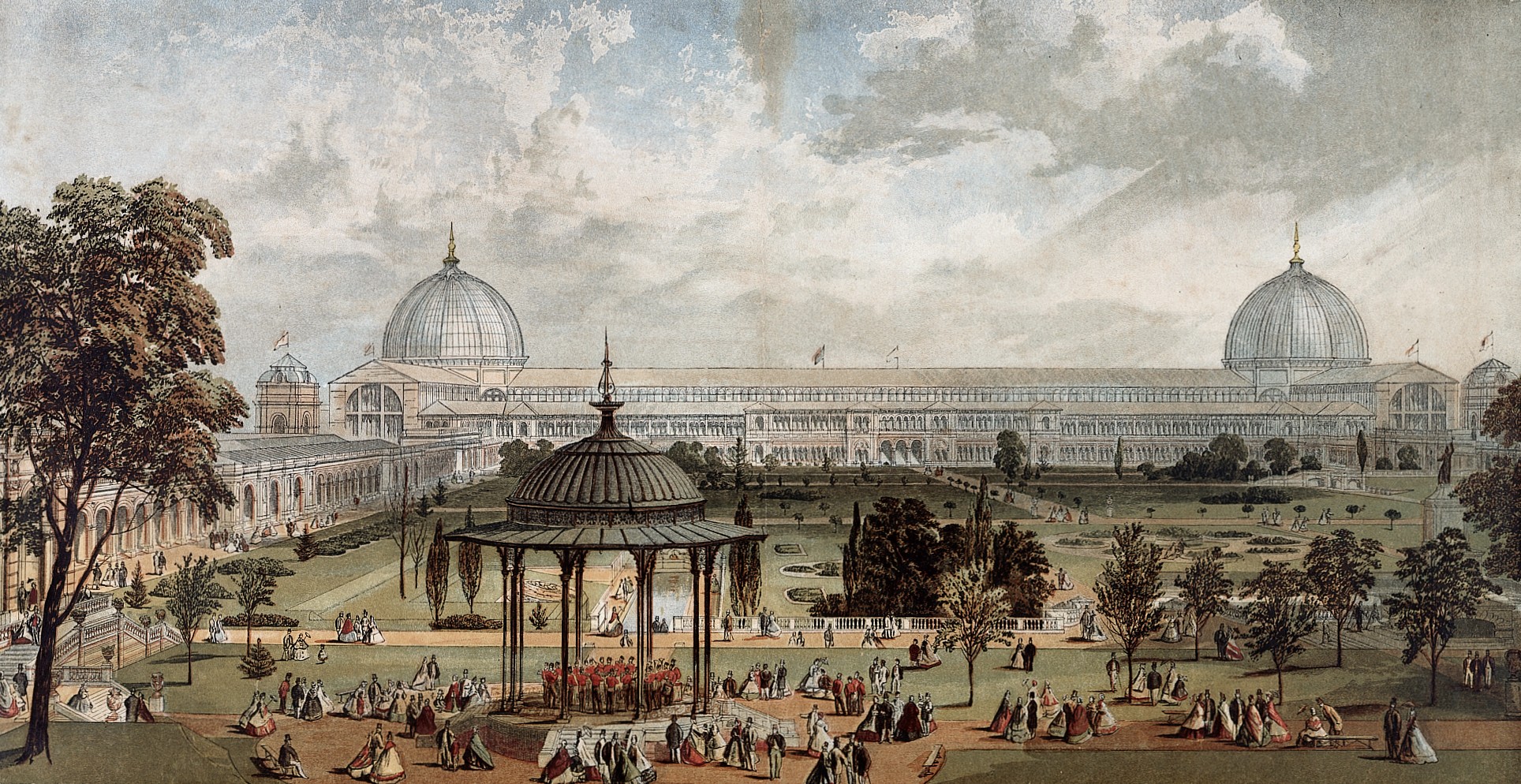
Outside of Crystal Palace at Hyde Park, London, United Kingdom. Designed by Joseph Paxton for the 1851 Great Exhibition. Via Wellcome Images, L0023683, CC BY 4.0
The Crystal Palace, constructed for the Great Exhibition of 1851 in London, stands as a groundbreaking precursor to modern pavilions, pioneering the concept of lightweight, prefabricated structures. Designed by Joseph Paxton, it epitomized the Industrial Revolution’s advancements with its innovative use of iron and glass.
The Crystal Palace heralded the emergence of the modern-era global exhibition, unparalleled in its magnitude, duration, and attendance: World Expos. This monumental international event established a precedent for showcasing extraordinary architectural marvels, consistently setting high standards for subsequent gatherings. Furthermore, World Expos have played a pivotal role in shaping the trajectory of global cultural exchange, fostering a culture of collaboration and innovation that resonates across borders.
World Expos: Inspiring Collaboration and Innovation Worldwide
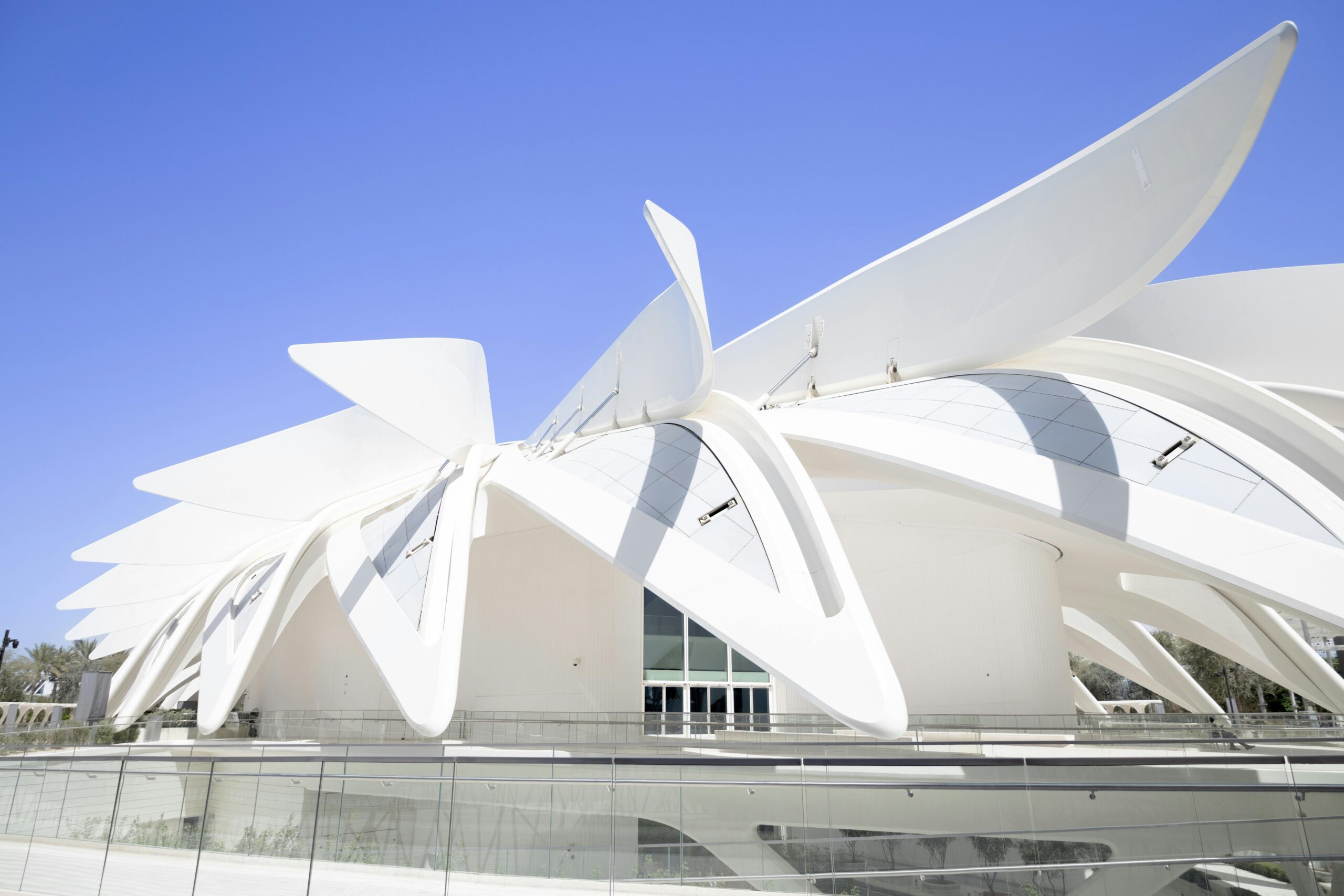
UAE Pavilion Expo Dubai by Santiago Calatrava | Photo by iCliff Agendia via Pexels.
World Expos have evolved significantly since their iconic 1851 debut, consistently presenting increasingly innovative designs that captivate vast audiences. The resounding success of recent editions, exemplified by the 2020 Dubai Expo, underscores the Expo’s enduring relevance and global appeal. Looking ahead, the upcoming World Expo in Osaka, Kansai, Japan, slated for April 13 to October 13, 2025, promises to continue this tradition of excellence under the theme “Designing Future Society for Our Lives.” Moreover, the anticipation mounts as Saudi Arabia, following its election by BIE Member States in 2023, prepares to host World Expo 2030 in Riyadh. With the theme “The Era of Change: Together for a Foresighted Tomorrow,” this future Expo heralds a new chapter in shaping our collective vision for the future. As the World Expo journey unfolds, it remains a beacon of inspiration, fostering collaboration and innovation on a global scale.
As we continue to witness the evolution and impact of World Expos, it is essential to explore other platforms that contribute to the discourse on architectural innovation and urban development. One such platform is the Venice Architecture Biennale, which offers a unique perspective on contemporary architectural trends and challenges, providing insights into the diverse approaches and visions shaping our built environment.
Exploring Architectural Frontiers: Highlights from the Venice Biennale
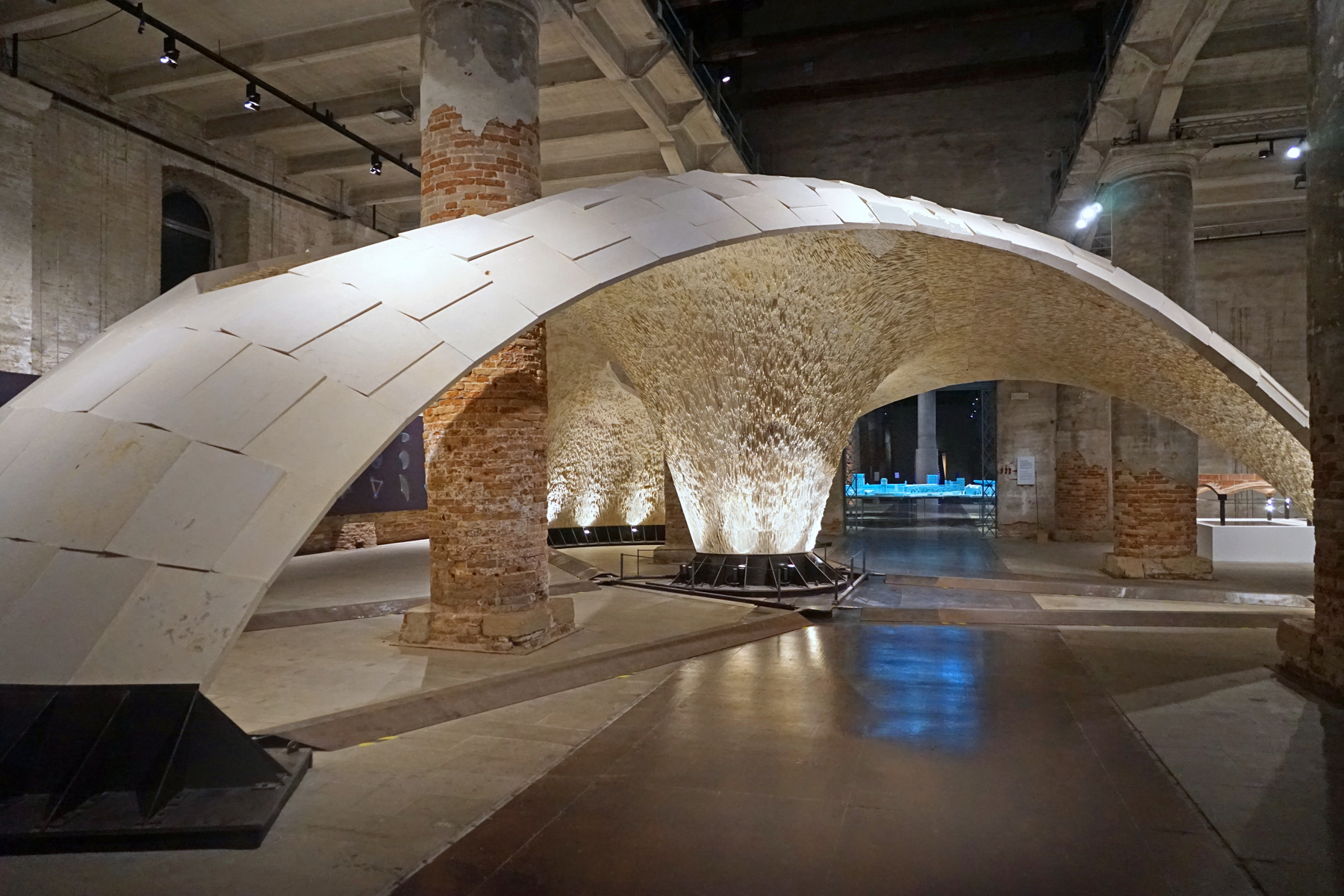
The Armadillo Vault, Venice Architecture Biennale 2016 by ETH Zurich’s Block Research Group | Photo by Jean-Pierre Dalbéra.
The Venice Architecture Biennale holds a distinguished position as a premier event in the architectural world, renowned for its global significance and inventive pavilions highlighting nations’ architectural prowess. This prowess is exemplified in The Armadillo Vault, the centerpiece of the “Beyond Bending” theme of the 2016 exhibition. An arched canopy of limestone slabs supported solely through compression rather than with adhesives such as mortar or glue epitomizes the boundless possibilities of architectural design.
A thematic orientation, which evolves with each edition — or every two years for the Biennale — serves as a guiding narrative for every exhibition. By establishing a central theme, organizers can curate a diverse range of projects that collectively explore different facets of a broader topic or idea. This thematic framework enhances the exhibition’s coherence and allows for deeper exploration and engagement with specific issues or concepts relevant to the architectural discourse on a global stage.
Digital Horizons: Pavilion Architecture in the Technological Age
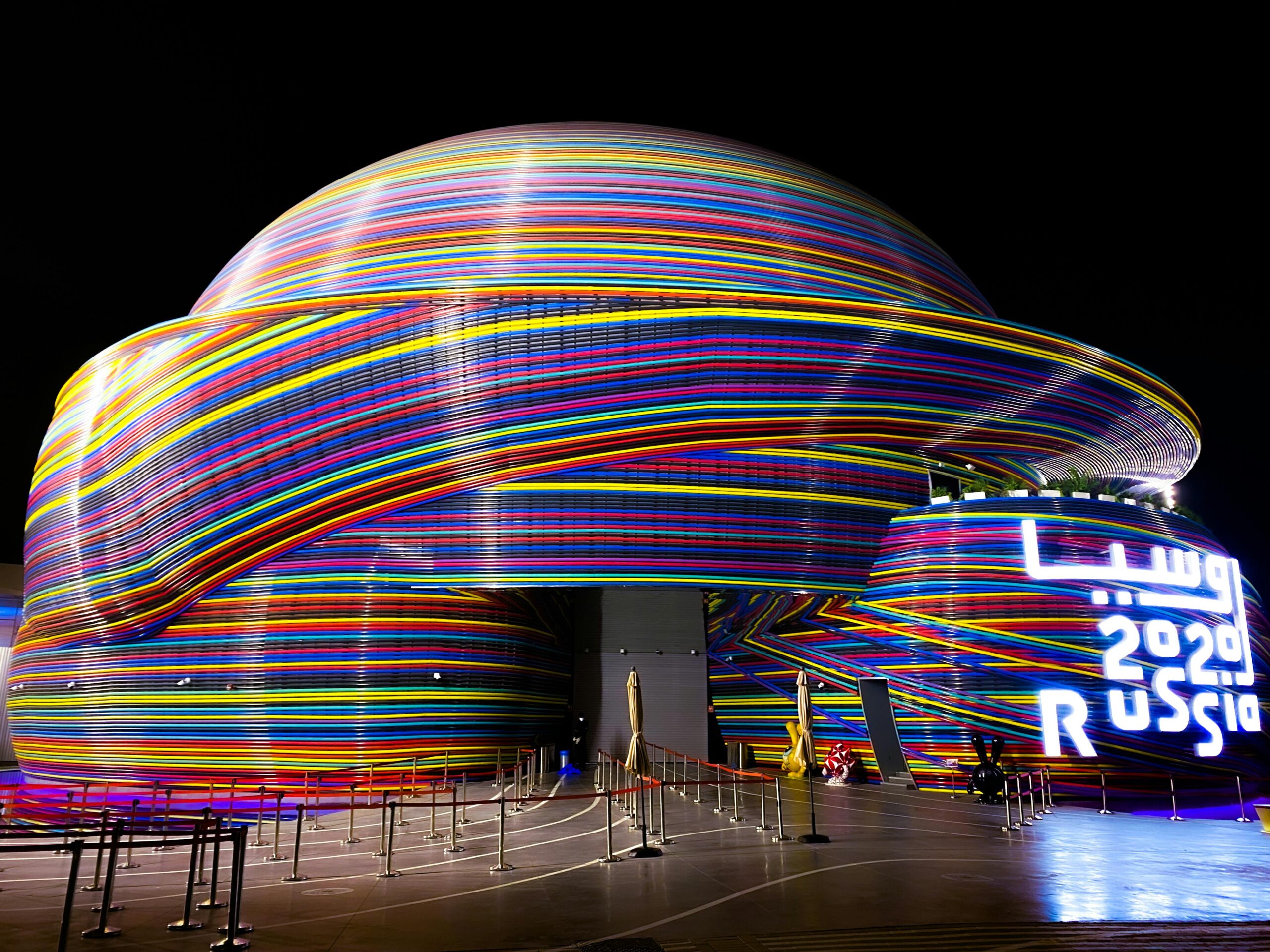
Russian pavilion at Expo 2020 Dubai, United Arab Emirates, by SPEECH. | Photo by Gaetano Travaglio via Pexels.
Pavilion architecture stands at the forefront of technological innovation, offering a vibrant canvas to showcase the advancements of our digital age. Architects employ cutting-edge construction techniques and materials, utilizing parametric design algorithms and robotic fabrication to redefine traditional notions of form and function. These pavilions seamlessly integrate interactive installations, harnessing augmented and virtual reality to create captivating digital experiences for visitors. In the age of connectivity, pavilions transcend physical boundaries by leveraging social media, live streaming and digital storytelling to engage with global audiences, thereby amplifying their influence. This dynamic approach embodies the innovative essence of our digital era, providing immersive and interactive experiences that resonate deeply with all who encounter them.
Cultural Showcases and Economic Engines: The Impact of Exhibition Events
The latest edition of “Architizer: The World’s Best Architecture” — a stunning, hardbound book celebrating the most inspiring contemporary architecture from around the globe — is now available. Order your copy today.

